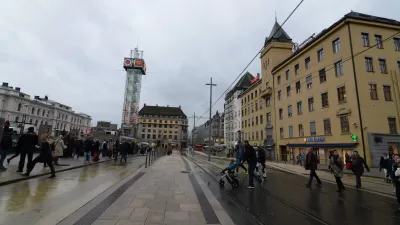Friday's foiled attempt by an alleged terrorist to massacre civilians on a Paris-bound, high-speed Thalys train has raised fears that a similar attack could be launched on one of America's lesser-speed trains. Are current security measures adequate?
"Unlike airports, which are guarded with multiple layers of security — including airport police and Transportation Security Administration [TSA] personnel operating metal detectors and full-body scanners — most railroad stations have minimal scrutiny for those boarding train," writes Ron Nixon for The New York Times.
True, larger stations, like Penn Station in Manhattan and Union Station in Washington "have armed Amtrak police officers, often with bomb-sniffing dogs" performing safety and security measures, including random searches of passengers and baggage, writes Nixon. Amtrak Police number 500 officers.
The August 21 first alleged terrorist attempt by Ayoub El-Khazzani, a Moroccan national who lived in Spain, was hardly the first example of train terrorism—though it may be first such attempt averted by the actions of passengers. Nixon points to:
- Mumbai, India killing of 190 on seven commuter trains 2008.
- London 2005: "Four coordinated bomb attacks tore apart subway trains and a bus in central London, killing 52 people and injuring hundreds more."
- Madrid train bombings that killed 191 people in 2004.
Nixon describes TSA's "Visible Intermodal Prevention and Response, or VIPR, squads, assigned to patrol transportation hubs such as train and bus stations." In a 2013 article, Nixon wrote that VIPR was started in 2005 after the Madrid bombings that killed 191 people.
Still, security experts say trains remain vulnerable to terrorist attacks. A 2011 report by the Department of Homeland Security found security gaps at many Amtrak stations. Congress and security experts have long debated whether to institute screening systems at railroad stations similar to those at airports, but plans have gone nowhere — largely because of cost and resistance from passengers.
Nixon notes that "frustrations with airport screenings" has led to increased patronage of Acela high-speed train between New York and Washington, amounting to 75 percent of corridor travel. Prior to September 11, 2001, when airport security became rigorous, the share was a third.
Amtrak allows firearms on trains, a result of a 2009 policy change posted here. However, they must be in checked baggage and packed accordingly.
FULL STORY: Train Attack in Europe Puts Focus on Vulnerability of U.S. Rail

Maui's Vacation Rental Debate Turns Ugly
Verbal attacks, misinformation campaigns and fistfights plague a high-stakes debate to convert thousands of vacation rentals into long-term housing.

Planetizen Federal Action Tracker
A weekly monitor of how Trump’s orders and actions are impacting planners and planning in America.

San Francisco Suspends Traffic Calming Amidst Record Deaths
Citing “a challenging fiscal landscape,” the city will cease the program on the heels of 42 traffic deaths, including 24 pedestrians.

Defunct Pittsburgh Power Plant to Become Residential Tower
A decommissioned steam heat plant will be redeveloped into almost 100 affordable housing units.

Trump Prompts Restructuring of Transportation Research Board in “Unprecedented Overreach”
The TRB has eliminated more than half of its committees including those focused on climate, equity, and cities.

Amtrak Rolls Out New Orleans to Alabama “Mardi Gras” Train
The new service will operate morning and evening departures between Mobile and New Orleans.
Urban Design for Planners 1: Software Tools
This six-course series explores essential urban design concepts using open source software and equips planners with the tools they need to participate fully in the urban design process.
Planning for Universal Design
Learn the tools for implementing Universal Design in planning regulations.
Heyer Gruel & Associates PA
JM Goldson LLC
Custer County Colorado
City of Camden Redevelopment Agency
City of Astoria
Transportation Research & Education Center (TREC) at Portland State University
Jefferson Parish Government
Camden Redevelopment Agency
City of Claremont



























